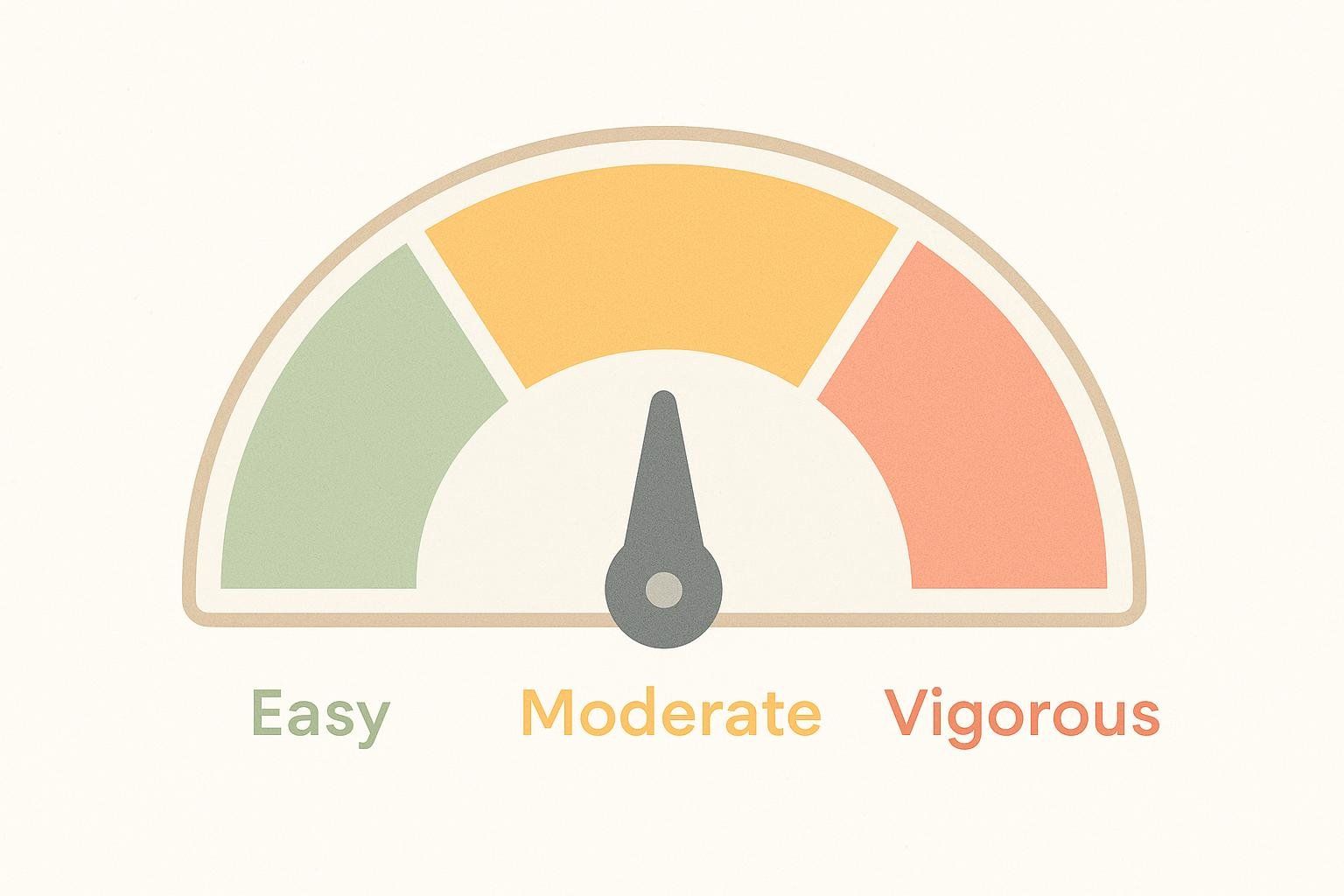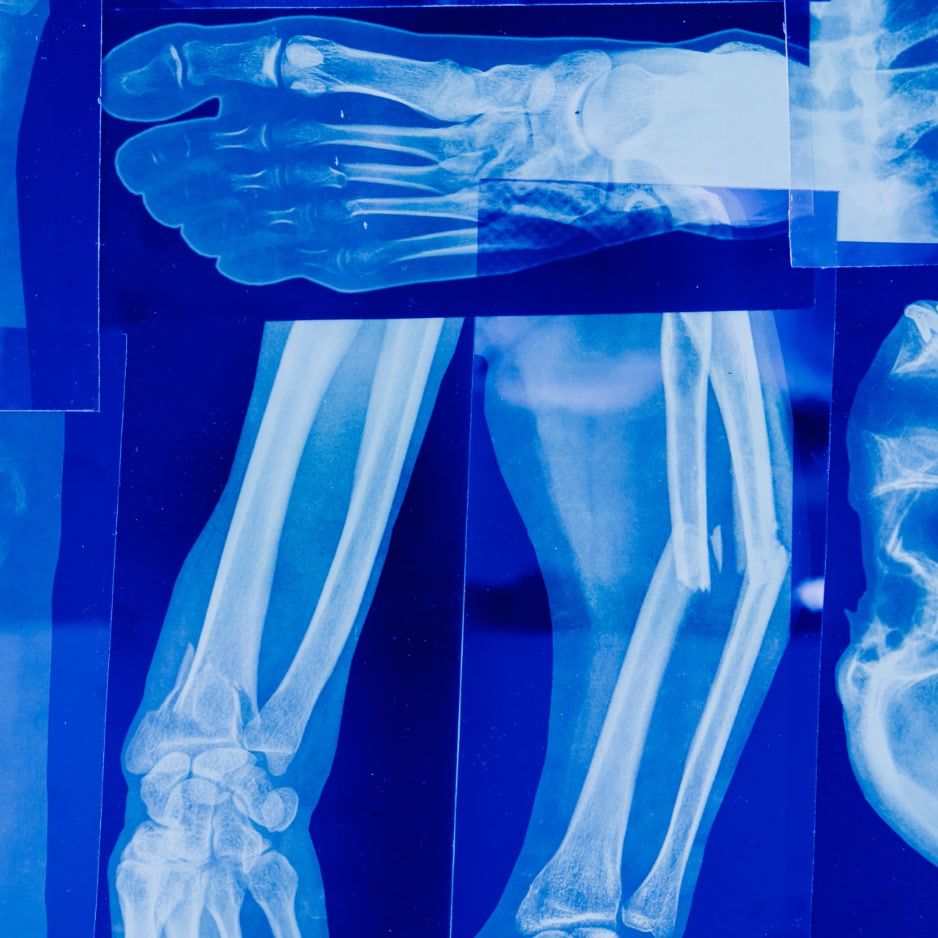FITT Principle: A Guide to a Smarter Workout Plan

FITT Principle: Your Guide to a Smarter Workout Plan
If you’ve ever wondered how to turn “I should work out more” into a plan you’ll actually follow, the FITT principle is your blueprint. FITT stands for Frequency, Intensity, Time, and Type — four levers you can tune to match your goals and your schedule.
It’s the backbone of exercise prescription used by coaches and clinical guidelines alike (ACSM Position Stand). This framework helps you progress without burning out or getting bored.
In this guide, you’ll learn what each FITT element means, evidence-backed ranges to start with, and sample plans you can adapt. You’ll also see how to track the real results that matter — fat loss, lean mass gain, and cardio fitness — so you can adjust your plan with confidence.
What is the FITT principle?
The FITT principle is a simple framework for structuring your training:
- Frequency: how often you exercise each week
- Intensity: how hard you’re working
- Time: how long you spend per session or per week
- Type: the mode of exercise (e.g., walking, cycling, lifting)

Major organizations recommend programming across these variables to meet health and performance goals. For adults, a foundational target is at least 150 minutes of moderate-intensity or 75 minutes of vigorous-intensity aerobic activity weekly, plus 2–3 days of resistance training for all major muscle groups (ACSM Position Stand and ACSM/CDC summary).
The four FITT levers, explained
1) Frequency — how many days per week

- Cardio: According to ACSM guidelines, 3–5 days per week works well for most; more frequent short sessions can aid weight loss and habit formation.
- Strength: ACSM suggests 2–3 nonconsecutive days per week for all major muscle groups; advanced lifters may use higher frequencies with split routines.
Tip: If you’re stuck, change frequency before cranking intensity — more frequent, shorter bouts are often easier to recover from and to schedule.
2) Intensity — how hard you’re working

You can gauge cardio intensity with heart-rate zones, the talk test, or RPE (rate of perceived exertion). According to the ACSM, moderate intensity feels like you can talk but not sing; vigorous feels “breathy” with short phrases only (ACSM/CDC summary). If you prefer heart-rate zones, see our step-by-step explainer and calculator in Heart Rate Zones: How to Calculate & Train Smarter.
For strength training, intensity is set by load and reps. ACSM guidelines note that higher reps with lighter loads build muscular endurance, moderate reps build muscle size, and lower reps with heavy loads target maximal strength. If you like using RPE to fine-tune your lifting effort, check our practical guide and chart in Rate of Perceived Exertion: Practical Guide & Calculator.
3) Time — how long you go

- Weekly targets: ACSM recommends 150–300 minutes of moderate cardio per week (or 75–150 minutes vigorous per week), which you can mix and match, plus resistance sessions (~20–60 minutes per session) covering all major muscle groups.
- Session length: Beginners can improve with shorter sessions and build up; experienced exercisers may go 30–60 minutes. Higher-intensity intervals are typically shorter.
4) Type — what you do

- Cardio options: walking, running, cycling, rowing, swimming, dance — rotate to stay engaged and to reduce overuse.
- Strength options: free weights, machines, cables, bands, kettlebells, and bodyweight patterns like squats, hinges, pushes, pulls, and carries.
- Don’t forget mobility and balance: Flexibility and neuromotor training 2–3 days per week supports function and reduces injury risk. For practical drills, see Mobility Exercises: Drills for Office Workers, Runners, and Seniors.
FITT setups by goal (quick-start table)
| Goal | Frequency | Intensity | Time | Type |
|---|---|---|---|---|
| General health | Cardio 3–5 days/week; Strength 2–3 days/week | Moderate cardio; moderate lifting effort | 150–300 min/week of cardio; 2–3 strength sessions of 20–60 min | Mix low-impact cardio + full-body strength; add 2–3 mobility sessions |
| Fat loss | Cardio 4–6 days/week (mix steady + intervals); Strength 2–3 days/week | Mostly moderate with 1–2 vigorous sessions if recovered | 200–300+ min/week of cardio; 2–3 strength sessions of 30–60 min | Low-impact cardio options + compound lifts |
| Muscle gain (hypertrophy) | Strength 3–5 days/week (splits ok); Cardio 2–3 easy days | Lifting at a challenging load across 6–12 reps; easy-to-moderate cardio | Strength 45–75 min; cardio 20–30 min | Compound lifts (squats, deadlifts) + isolation exercises (curls, raises) |
| Endurance | Cardio 4–6 days/week (periodized); Strength 2 days/week | Mostly moderate with planned tempo/intervals | 200–300+ min/week of cardio; 2 strength sessions of 20–45 min | Sport-specific cardio + strength for durability |
Before you try the sample plans below, consider your health status and training history.
This article is educational and not a substitute for medical advice. Consult your healthcare provider or a qualified coach before beginning a new exercise program, especially if you have medical conditions or haven’t been active recently.
Sample week: beginner fat-loss plan

- Mon — 30 min brisk walk (moderate); core + mobility 10 min
- Tue — Full-body strength (8–12 reps), 2–3 sets each (30–40 min):
- Goblet Squat (or bodyweight box squat)
- Incline Pushup (or Standard/Knee Pushup)
- Dumbbell Romanian Deadlift (hip-hinge pattern)
- Chest-Supported Dumbbell Row (or Seated Cable Row)
- Farmer’s Carry (or Suitcase Carry)
- Wed — 30 min cycling (moderate); finish with 5 x 20 sec faster spins, easy pedaling between
- Thu — Rest or 20 min easy walk + 10 min mobility
- Fri — Full-body strength (same as Tuesday), 2–3 sets each (30–40 min)
- Sat — 45–60 min hike or long walk (moderate)
- Sun — Rest, stretch 10–15 min
Progression: Add 5–10 minutes to two cardio sessions, or add one extra set per lift each week you feel recovered. If you feel overly tired or sore, repeat the week without adding more, or scale back to prioritize recovery.
Sample week: muscle-gain (hypertrophy) split
- Mon — Upper A (3–4 sets of 6–12 reps):
- Barbell Bench Press
- Bent-Over Barbell Row
- Incline Dumbbell Press
- Lat Pulldown
- Barbell Curl
- Cable Triceps Pressdown
- Tue — Lower A (3–4 sets of 6–12 reps):
- Back Squat
- Romanian Deadlift
- Bulgarian Split Squat
- Leg Curl (machine or band)
- Standing Calf Raise
- Optional: 15–20 min easy cardio
- Wed — Off or active recovery:
- 20–30 min easy cardio
- Mobility work
- Thu — Upper B (3–4 sets of 6–12 reps):
- Overhead Barbell Press
- Chest-Supported Row
- Dips or Close-Grip Bench Press
- One-Arm Dumbbell Row
- Dumbbell Lateral Raise
- Rear Delt Fly Machine
- Fri — Lower B (3–4 sets of 6–12 reps):
- Barbell Romanian Deadlift or Dumbbell RDL
- Leg Press (quad focus)
- Hip Thrust
- Hip Adduction/Abduction Machine
- Optional: 10–15 min easy cardio
- Sat — Active recovery:
- Walk or cycle 30–45 min (easy)
- Sun — Off
Progression: When you hit the top of a rep range with good form, increase load 2–5% next session. End each set feeling like you could have done 1–3 more good-form reps (this is called “reps in reserve”).
How to measure progress (so you can adjust FITT)
Scale weight alone can’t tell you whether changes came from fat or muscle. A DEXA body composition scan shows fat mass, lean mass, and visceral fat, giving you an objective measurement of whether your plan is working — and what to tweak.

Learn how DEXA differs from other methods in DEXA Scan Benefits: Bone Health and Body Composition and Body Composition vs. Weight: What Matters for Your Health.
Practical targets:
- Fat loss focus: Aim to lose 0.5–1.0% of body weight per week while preserving lean mass; adjust Frequency/Time first before chasing intensity.
- Muscle gain focus: Aim for gradual lean-mass increases with minimal fat gain; use consistent strength PRs and periodic DEXA scans to verify trends.
Using DEXA to objectively track FITT progress:
- Cadence: Re-scan every 8–12 weeks (or monthly during focused phases) to confirm that training and nutrition are moving fat mass ↓ and lean mass ↑. For more detail on timing your scans, read our guide on when to get a DEXA scan (and how often).
- Metrics to watch:
- Total body fat % and fat mass: is fat actually dropping?
- Lean mass (global and regional): e.g., legs for runners; trunk/arms for lifters
- Visceral adipose tissue (VAT): a key health marker to keep trending down
- How to adjust with data:
- If fat loss stalls: add Frequency (a 4th cardio day) or Time (+10–15 min to two sessions)
- If lean mass isn’t rising: increase Intensity slightly (heavier loads within 6–12 reps) or Frequency (add a 3rd upper/lower day) and ensure nutrition supports growth
- If recovery lags: pull back Intensity for 1–2 weeks while maintaining Frequency to preserve habit
Troubleshooting with FITT
- Plateaued? Change one lever at a time. Example: add a 4th cardio day or extend two sessions by 10–15 minutes before adding more vigorous work.
- Sore all the time? Dial intensity down (RPE 5–7/10) and keep frequency consistent for a week.
- Busy week? Keep Frequency, shrink Time: do 15–20 minute “micro-workouts.”
- Bored? Change Type: swap treadmill for rowing, dumbbells for kettlebells.
FAQs
-
What’s the best order: cardio or lifting first? If strength or muscle is the priority, lift first when fresh; if endurance is the priority, do cardio first. You can also combine cardio and strength on the same day; alternating AM/PM or separating by several hours helps manage fatigue and reduce the “interference effect” (doing lots of cardio can temporarily blunt strength or muscle gains if recovery is inadequate).
-
How often should I change my program? Keep the same main lifts and weekly structure for 4–8 weeks, progressing either load, reps, or time. Rotate exercise “type” every 8–12 weeks to stay fresh.
-
How intense should my cardio be? Most benefits accrue from a base of moderate-intensity work with limited vigorous sessions as you recover well. For zone setup, see Heart Rate Zones: How to Calculate & Train Smarter.
-
Do I need mobility work? Yes — 2–3 sessions per week of flexibility and neuromotor training supports joint health and function.
Bring it together
Start with the proven minimums, personalize one lever at a time, and use objective data to see what’s working. For a clear before-and-after on fat and muscle — and to keep each training block accountable — schedule regular BodySpec DEXA scans every 8–12 weeks and track your FITT progress like a pro. Book your BodySpec DEXA scan.


